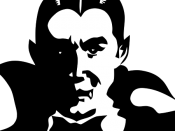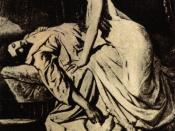The Real Vampire
"The Real Vampire" by Paul Barber brilliantly illustrates the fear that 18th century Europeans related to vampires. In every religion, we talk about the soul and passing onto another existence because death will always be a great mystery. While the modern-age vampire has become glorified through the works of Bram Stoker's Dracula, Universal's Bela Lugosi's portrayal on the big screen, or Stephanie Meyer's worldwide phenomenon The Twilight Saga, there is always a history as to where the tale came from. Barber goes onto describe what a typical Slavic vampire would look like and he's not the graceful squire that we associate vampires with. Rather, he would look like a scruffy-looking vagrant. Accusing people of being vampires can be seen as both a way of releasing societal tension, or harmful in the way that they brought suspicion on those who were socially marginalized. This essay is going to delve into both point of views in order to get a more holistic one.
Europeans in the 18th century had to account for deaths due to contagion because there were no theories of communicable diseases. Plagues and other contagious diseases were not understood because people didn't comprehend that illness and death were related to microbes and other bacteria. There was no way to comprehend that death can take people quickly so vampires gave them a rational explanation to cope with sudden deaths. Forensic pathology was not officially recognized until 1959 so there wasn't a method to account for causes of flaky skin, bloated corpses with fresh blood, or nails falling off because this was a natural process that decomposing bodies go through. It also helped to explain nightmares and dreams about dead people. The separation theory of the body leaving the soul while you sleep, gives...


